2.1 Years of publication for the documents analyzed
Figure 1 shows the documents published in each of the years covered by the study. There were 3,118 articles in the sample analyzed, which represents a mean of 239,84 documents per year.
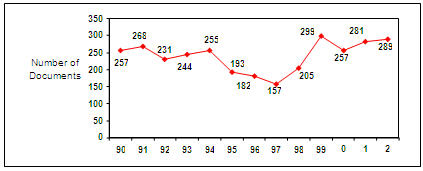
Figure 1. Distribution of articles per year
We can observe that in the first 5 years the trend in the number of publications is similar. There is a noticeable descent in the following 4 years, after which there is a small increase. In reference, Table I shows the number of documents analyzed, the annual bdd totals, and those indexed from the area from which the sample is taken.
Table I. Total documents for the area of education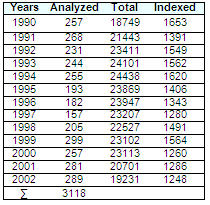
2.2 Titles of journals
To make the analysis of the titles of journals that have published on educational research, the Bradford S.C. model of dispersion of scientific literature was applied. This model permits an identification of the nucleus of more specific journals which have contributed information on the theme object of study —better known as the law of dissemination of scientific literature. In Table II the journals are arranged in descending order by number of documents published, for nuclei 1 and 2; the year in which their publication began is reflected as complementary data.
Table II. Nucleus 1 and 2 of Bradford S.C.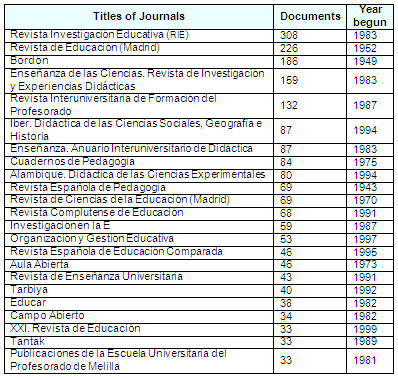
In applying the model of Bradford, S.C. three zones were established: nucleus one, with 1,011 documents, 33.37% of which are published in the first five titles of the journals reflected above; nucleus two, with 1,002 documents, 33.07% of which were published in 18 titles; and finally, nucleus three, with 1,017 documents, 33.56% of which were published in 157 titles. There are 181 titles in the total set, which allows us to deduce that there is a strong concentration of the information, since in other studies of the educational area the dispersion of titles is much higher (Anta, 2004a, 2004b).
2.3 Authorships
The study of this variable permits us to identify the authors with the articles they produced. From this we can deduce which are more productive, and which who are less. This analysis offers the possibility of detecting the leaders or most prolific persons —the unmistakable experts or authorities in the field. In the set of 3,118 documents, 27 are anonymous, and the rest have been written by 5,710 authors; this represents a mean of 1.85 authors per document. Although this is one of the highest means obtained, as compared with other studies of the area, it is still low (Exposito & Fernandez Cano, 2002).
2.4 Index of collaboration
The collaboration of researchers or professionals in writing a work or an article has increased markedly in all areas of knowledge; this has been slower in social science and humanities. Still, one can see that there is an increasing number of documents done in collaboration. Without a doubt, there is greater approval on the part of the scientific community in general, and in particular, for a group or team. Hence, this index, drawn up with the aim of observing the communications networks between specialists in education.
In the evaluation, there were found 1,301 documents written by two or more authors —which elevates the percentage of collaboration to 41.72%. Table III shows the groups of authors obtained. This index is slightly higher than those found for the area in other works (Anta 2004a, 2004b), and is a positive datum, since the study was done by more than one researcher, and as a result, observation of the data can provide more material for discussion.
Table III. Collaboration between authors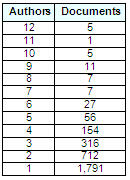
2.5 Institutional affiliation of the authors
The information shown in this section has to do with the institutions where the authors did the work, or had the experience they express in the articles. From this can be deduced the contractual link or relationship —scientific, or of another type— which they have with the organization, and which in some way reflects its objectives or lines of study. There are 2,417 documents (77.51%) in the set which provides information about this. Table IV contains the generic names of the institutions found.
Table IV. Workplaces of the authors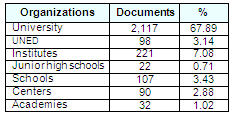
We found that the university is the institution with the greatest number of publications; however, it is increasingly common for institutes, colleges and schools to make public the information they generate.
2.6 Institutional cooperation
Table V shows the results obtained to quantify institutional collaboration, i.e., the organizations that have participated in the publications. The set of documents produced by researchers from two or more institutions amounted to 294.
Table V. Number of organizations per article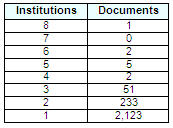
In order to know the geographical origin of researchers and institutions who have been participants in the works, Table VI was produced. It presents the number of documents published in each of the autonomous communities and their respective cities.
Table VI. Distribution of documents published by autonomous communities
There are documents from all the autonomous communities, but these are the most productive: Andalucia, Madrid, Cataluña, Valencia, Castilla and Leon.
2.7 International organizations
The information proceeding from international institutions is reflected in Table VII. Two hundred ninety-six relevant articles were found: 126 from Latin America; 120 from European countries; and 50 from other places.
Table VII. Countries of international organizations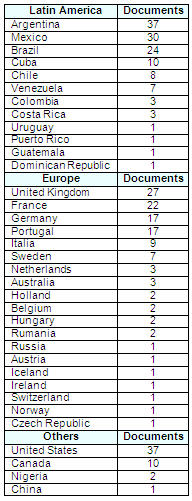
These data can have more than one interpretation. On the one hand, information can be obtained from other, different geographic contexts, what is being done by specialists in the area can be observed. The mean for articles by international organizations published in Spanish journals is 22.76 documents per year.
2.8 Languages
Obviously, the greater part of the publications were written in Spanish, although there are documents in other languages of the Spanish state, and in languages from other geographical environments (see Table VIII).
Table VIII. Distribution by languages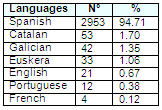
2.9 Contents
The study was also geared to determining the contents to which the documents refer. It was based on the thematic area object of the study, educational research, and related terms, as indicated in the section on the choice of the sample.
On the other hand, by means of indexing methodology, represented by a mean of 6 to 8 descriptors per article, which express the conceptual representation of the information analyzed, there was obtained a wide range of concepts synthesized in a battery of 28 variables grouped in 8 categories.
2.10 Educational levels
High School is the level of education with the most students, followed by Elementary School. Regarding the data on Upper-level Education, it may be that their transference is shown in a more specific form, and that some do not reflect the educational level (see Figure 2).

Figure 2. Distribution by educational levels
2.11Teachers
The training and updating of teachers are preferred points of interest in the theme analyzed, as may be observed in Figure 3.
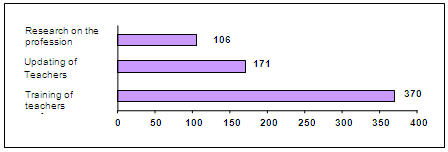
Figure 3. Teaching profession
2.12 Subjects
In order to facilitate the interpretation, subjects were grouped, since all the curriculum areas were an object of study for this work. In this classification, an effort has been made to gather information in two areas: Science; and Social Sciences and Humanities. Also shown are other subjects, which because of the number of results and the importance of the theme, it seemed necessary to stress (see Figure 4).
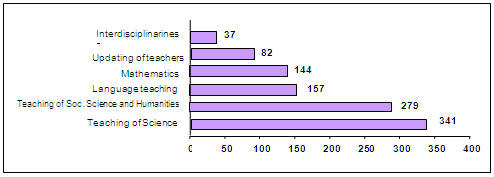
Figure 4. Areas of education
2.13 Curriculum
The curriculum and research concerning it has been one of the most preferable of the themes analyzed. (see Figure 5).
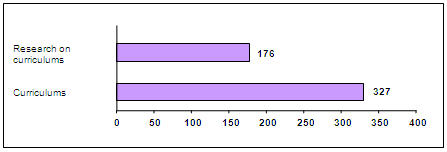
Figure 5. Curriculums
2.14 Psychology of education
Learning, and its various typologies, has been the most important object of many of the studies (see Figure 6).

Figure 6. Psychology of education
2.15 Learning center
Although research on the learning center is analyzed less frequently than other themes, it is nonetheless significant (see Figure 7).

Figure 7. Learning center
2.16 Sociology of education
Cultural pluralism and interculturality are themes which offer data of notable interest today (see Figure 8).

Figure 8. Sociology of education
2.17 Educational technology
Studies on educational technology offer data regarding its use and application in the area, together with its possible implications (see Figure 9).

Figure 9. Educational technology